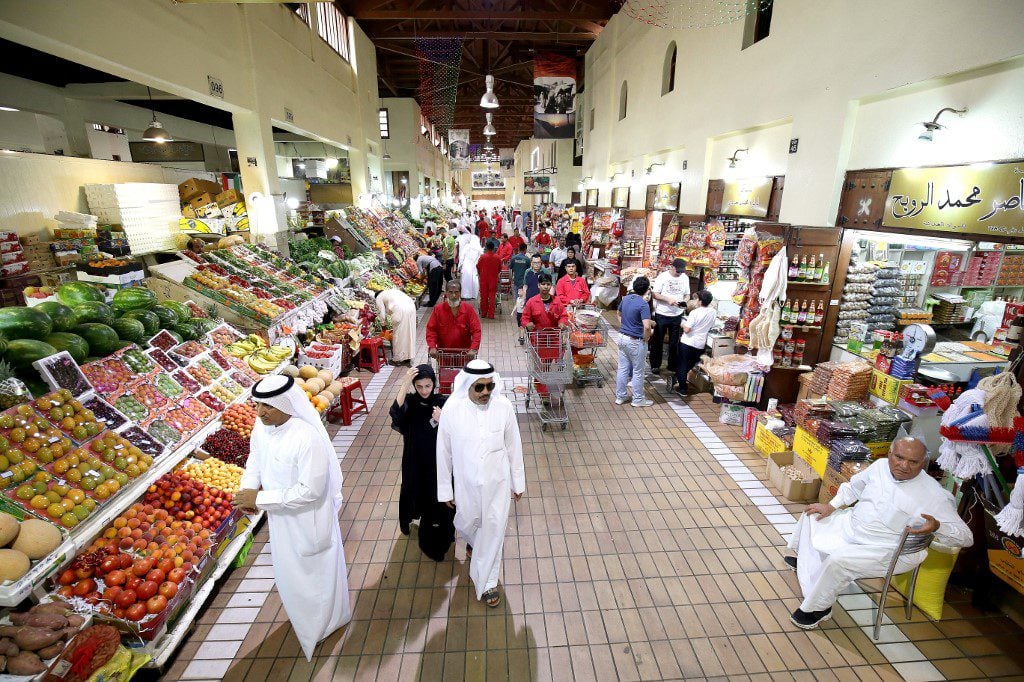
Introduction
For Muslims across the world, the beginning of the ninth month in the Muslim lunar calendar which marks the start of Ramadan is a time for spiritual reflection, prayers, and fasting.
During Ramadan practicing Muslims do not eat, drink, smoke, or have sex between sunrise and sunset. Approximately half of Kuwait’s population is Kuwaiti. The other half consists of a foreign workforce that includes well-paid, largely Arab and Western white-collar workers at its apex and a much larger group of poorly paid foreign labourers, largely from the Indian subcontinent.
The national population is predominantly Sunni, with a significant Shiite minority. Stateless residents, called bedoun (from bidun jinsiya, ‘without nationality’) constitute another element of Kuwaiti society. The sharpest social divisions in Kuwait are between citizens and expatriates, Sunnis and Shiites, and hadar (the settled, Sunni urban elite) and badu (Bedouin tribes who settled largely in the mid-late 20th century).
Family
The family (aila) is the central institution around which practically all aspects of Kuwaiti society, including the economic and political, revolve. This fact is emphasized by Article 9 of the Constitution, which asserts that ‘the family is the cornerstone of society. It is founded on religion, morality, and patriotism’. This article shows that the family is viewed by the authorities as to the breeding ground, guardian, and transmitter of both traditional ‘Islamic’ and more modern patriotic values.
Although the patriarch or husband is considered the formal head of the household, it is the women who, while raising their young children, are assigned the sacred task of upholding morality in society. It is revealing that, when a couple separates, Kuwaiti law punishes the woman by substantially limiting her rights to social benefits.
Although the moral function of the family and the specific roles assigned to its members have stayed more or less the same in the mind of the average (still quite conservative) Kuwaiti, the institution has undergone radical changes in outward appearance. As in all traditionally tribal Arab societies, the term aila in Kuwait used to denote the extended family, clan, or even tribe.
Its numerous members used to live concentrated in certain neighbourhoods. Individual households typically comprised more than two generations, often also including uncles and aunts. Today, however, traditional tribal settlement practices have lost their appeal. Young married Kuwaitis want a private place of their own to live, and in choosing a neighbourhood their main priority is not the location of their kin. This modern inclination has been strengthened by government housing projects, which have provided new residential areas where young married couples settle side by side irrespective of tribal backgrounds.
Intra-family marriages
In the Gulf, the institution of marriage has traditionally been considered an important means of strengthening the extended family network. As a result, marriages within the aila have been the rule. According to a 2000 study by the GCC Council of Health Ministers, 42 percent of all married couples in the Gulf are related to one another. For Kuwait, 36 percent of the couples were related, in Oman 54 percent, in Saudi Arabia 52 percent, in Qatar 45 percent, in the UAE 40 percent, and in Bahrain 31 percent.
Women
Kuwaiti households increasingly resemble the typical ‘modern’ nuclear family of one husband, one spouse, and two or three children. The number of children in the Kuwaiti nuclear family has decreased rapidly since independence. In the early 1970s, women had an average of 6.9 children. For the period 2000-2005 this figure had, according to the United Nations Development Programme (UNDP), fallen to 2.3, the lowest of all Gulf Cooperation Council (GCC) countries (although this figure includes non-nationals, and other sources put this figure at 2.8 or 2.9).
9 percent of Kuwaiti women under the age of 50 share their husbands with other legal wives. This resembles polygamy practices in Bahrain and Qatar (8 percent) but not those of much more tribally oriented Saudi Arabia (19 percent) and the UAE (14.5 percent). The average Kuwaiti woman marries at a later age than women in other GCC countries, at a median age of 20 (the GCC average is 17.5).
She is also less likely to remarry than her GCC sisters: being divorced or widowed at a mean age of 27, only 39 percent of divorced or widowed Kuwaiti females find a new husband. For much poorer and more traditional Oman this figure is 32 years and 70 percent respectively; analogous figures for Kuwaiti males are not available.
Family planning
In the Arab Gulf States, family planning is not encouraged by the state or religious authorities. The state, through financial incentives, actively encourages married couples to have many children. In practice, access to contraception is available in free government health facilities, but only about 50 percent of Kuwaiti couples use contraceptives. Sexual abstinence is a much more important factor in birth planning.
Abortion is legal to save the mother’s life and, in the first four months of pregnancy, to preserve the woman’s physical or mental health and in instances of fetal impairment. In most instances, abortions are legal only if performed in a public hospital, after reviewing by a committee. an unknown number of Gulf women resort to traditional practices – such as abdominal massages, herbal, and spicy drinks – and illegal abortions in ending unwanted pregnancies.
Gender Inequality
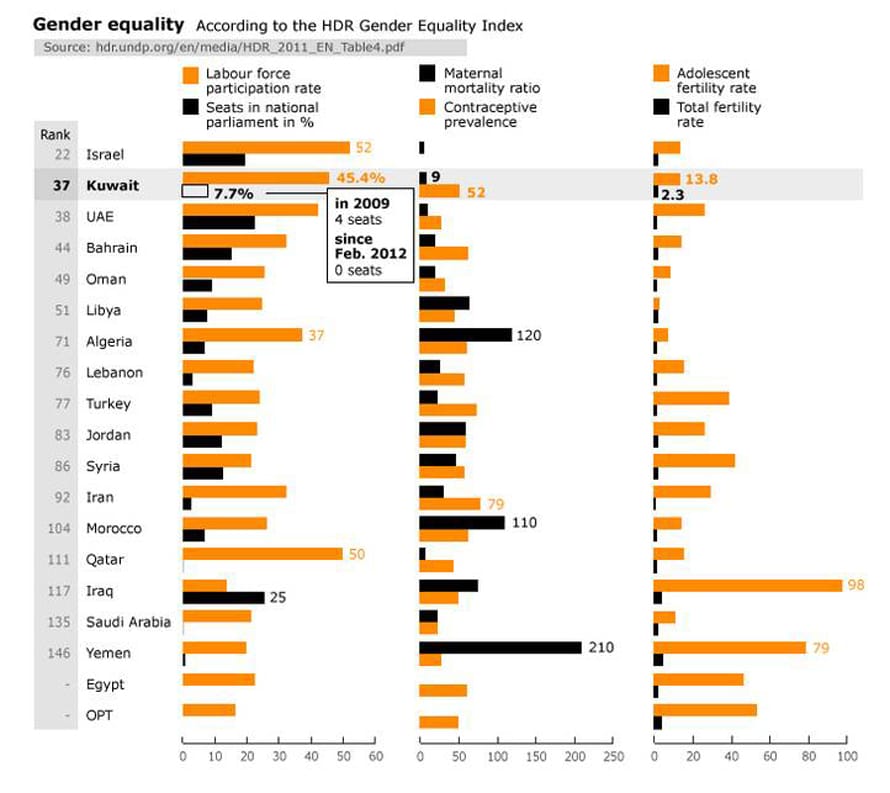
Although Kuwait ranks highest (37th) of all Middle Eastern countries on the UNDP gender-related development index, discrimination against women in Kuwait is widespread and has been institutionalized in many laws. Only since 2005 have Kuwaiti women been allowed to vote and stand for office in parliamentary elections. Earlier attempts by the government to introduce political rights for female citizens had been blocked by Parliament.
Spousal rape is not considered a crime in Kuwait – at least it is not recognized as such by the judicial system. Likewise, Kuwaiti law does not specifically prohibit domestic violence or (non-domestic) sexual harassment. Nonetheless, a glance at a local newspaper will quickly show the outsider, sexual harassment and even rape are regular phenomena in Kuwaiti society.
A local newspaper survey found that 40 percent of female respondents from various professions had experienced sexual harassment in the workplace. Domestic servants are in an especially vulnerable position, and if the cases making the news are only the tip of the iceberg – considering the fact that domestic servants are almost totally dependent on their sponsors and generally kept in social isolation – then we can only begin to assess the seriousness of the problem of local sexual crime.
Emancipation for Kuwaiti women has always been the easiest in the upper classes. Virtually all Kuwaiti women attaining social positions of high standing and visibility come from the elite merchant families or the ruling family. In these circles, educated women have not considered so much a threat to male economic dominance and patriarchal tradition as an additional way to keep wealth and power within their own social class. When no able ‘elite’ male is available for a certain position, members of the upper class are more likely to turn to a female candidate from within the own group than to a male outsider from the middle classes.
Because the middle classes rely heavily on civil-service jobs in an already seriously overcrowded state bureaucracy, they have more reasons to fear the competition of highly educated women (women now constitute well over half of the students at Kuwait University). Women in civil service are typically ‘sheltered’ by males from the more ‘demanding’ and thus more prestigious and influential positions.
This may partly explain why membership in Islamist associations is so popular among modern Kuwaiti middle-class women. These segregated organizations offer middle-class women a ‘decent’ platform for acquiring social standing and influence, which has been denied to them by their male counterparts in regular mixed society.
Youth
According to UNDP figures, 23.8 percent of the Kuwaiti population in 2005 was younger than 15, far above the global average of 18 percent for under-15s in high-income countries but significantly lower than the global under-15 population of 28.4 percent. Other public sources mention a percentage of 26.4 percent for 2009, and 26.7 in 2010 (United Nations Department of Economic and Social Affairs). But all these sources fail to differentiate between the citizen and the temporary immigrant population.
Because the detailed results of the 2005 census have not yet been released by the Kuwaiti authorities, we have to rely on estimates by independent statistical specialists from the region. According to one of these, Nadeya Sayed Ali Mohammed, roughly 42 percent of the citizen population in Kuwait in 2005 was under 15 years of age.
This figure may appear extremely high, especially for a highly developed country like Kuwait, but the number of children aged 0-14 as a percentage of the citizen population has actually declined from about 54 percent in 1990 and will continue to decline to an estimated 30-34 percent in 2025.
While citizen fertility rates and the proportion of under-15 youth in the total citizen population continue to decline, the yearly addition of university-graduated youth to the national workforce will continue to grow substantially in the foreseeable future, with an expected yearly net addition of 6.3 percent by 2015. Add to this an expected higher female participation rate in the workforce, a dependency on civil-service jobs by citizen workers of almost 90 percent, and a civil service that is meant to shrink in the coming years instead of expanding even further, and the huge challenges facing the government are clear.
It will be increasingly difficult, if not impossible, for the government to continue to guarantee every citizen youth entering the job market a comfortable position in the civil service. This means that at least some young Kuwaitis will, in the near future, be forced to accept non-civil-service jobs, or even non-white-collar jobs. Therefore, in order to minimize social tensions, a fundamental change in work ethic among the new generation is needed.
Education

Kuwait has the highest adult literacy rates in the Gulf region, 93.9 percent for males and 91.8 percent for females in 2008, according to the UNESCO. This reflects the fact that, with Bahrain, Kuwait has been a regional forerunner in establishing modern educational institutions. It was the merchant elite who, in 1912, established the first private boys’ school in Kuwait.
Here, clerical skills could be taught to elite boys. Before 1912 local educational facilities had been limited to kuttab or Koran schools, where only elementary reading and writing skills were taught, along with basic Koranic instruction by rote. Palestinian immigrant teachers promoted the introduction of secondary education for boys (in 1936) and girls (in 1937).
It was not until the 1960s, when education for children aged six to fourteen became not only free but also compulsory, that modern education for both boys and girls (again segregated by gender in government schools since 2001) made significant advances.
In 2005-2006, 295,366 pupils attended 468 Kuwaiti government schools at the primary, intermediate, and secondary level; 139,039 pupils attended 351 private schools at the same levels. The total number of pupils at the non-compulsory secondary level (14-18 years) was significantly lower than that of the intermediate and primary levels (90,676, 140,949, and 202,780 pupils respectively).
In 2000-2001, about two-thirds of the decrease in pupil numbers beyond the compulsory intermediate level was due to female withdrawal (no separate figures for citizen and non-citizen pupils are available). So, while male and female participation is about even up to the secondary level, females are in the minority at the secondary level (46 percent in 2000-2001).
The majority of university students are women. Almost 70 percent of the 18,691 citizen students enrolled at Kuwait University (legally re-segregated since 1996) at the beginning of the academic year 2006-2007 were female. Of the 6,160 citizens registered at local private universities and colleges, male students constituted just a small majority of 52 percent.
The overall gender discrepancy in local university enrolment may be explained in part by traditional taboos prohibiting women from studying abroad without their families. It may also be due to higher test scores for women and to the fact that more relatively well-paying jobs (notably in the police and military) are available to men (some of whom feel pressure to support the family) than to women, immediately upon graduation from high school.
Health

In the 1950s Kuwait was the first Gulf State to develop a comprehensive cradle-to-grave, free health-care system for all its inhabitants. As a result, many infectious and communicable diseases, such as cholera, diphtheria, polio, and tetanus, have been eradicated. Other traditional scourges of Kuwait, such as malaria and tuberculosis, have declined significantly.
Life expectancy at birth for Kuwaiti citizens has risen spectacularly: in 2012 it was 79 years for females and 78 years for males, according to the World Health Organization (WHO). This is just below the average for high-income countries worldwide (78.7 years for males and females taken together). Within the Gulf Cooperation Council, only citizens of the UAE have a higher average life expectancy (81/76.8). Total health expenditure per capita in 2009 was USD 1498 (3 percent of GDP).
A 2006 report by WHO warned Kuwait that, although it had made great progress during the second half of the 20th century, its health services have to continue to develop, in order to meet the demands of the 21st century. Although citizen expectations of health care have been rising, the quality of, and service provided by, government health facilities have not risen accordingly. It is for this reason that private clinics, known to prescribe costly and often unnecessary medicines and treatments for relatively minor ailments, are gaining popularity.
Non-communicable diseases such as cancers and coronary heart disease are increasing at an alarming rate, as are health risk factors such as obesity, diabetes, dyslipidemia, and physical inactivity. Accidents and injuries, mainly from road accidents and accidents at work, also show sharp increases. Many expatriates suffer from mental disorders. All these ‘new’ diseases necessitate a new approach to health care, with more attention to prevention, public health education, and a good system of medical registration, information, and analysis.
Civil Society
According to the Ministry of Social Affairs, about 300 NGOs are registered in Kuwait. They are active in such areas as health, human rights, environment, and welfare. Although they have a formal ‘non-government’ status, most of them rely heavily on the state for funds and patronage. NGOs critical of government policy are regularly denied registration.
Probably more important in terms of civil dynamics is the traditional Kuwaiti institution of the diwaniya, a sort of social gathering. Diwaniya meetings take place in the privacy of one of the member’s homes, and one has to be personally invited to take part. This guarantees the institution relative independence from the state, whose officials regularly visit diwaniyas to keep in touch with public opinion.
When security forces violently intruded into opposition diwaniyas in 1989-1990, dispersing their participants and arresting hosts, the image of the state as the protector of traditional ‘Kuwaiti’ values was severely damaged. Diwaniyas are traditionally all-male, but in recent years some all-female diwaniyas have been held.
Crime
Assessing the level of crime in Kuwait is extremely difficult or impossible. Reliable official information is lacking, and there is the problem of defining ‘crime’ in both international and local terms. For example, spousal rape is not considered a crime in Kuwait – at least it is not recognized as such by the judicial system. Likewise, Kuwaiti law does not specifically prohibit domestic violence or (non-domestic) sexual harassment.
Partly related to the issue of sexual crimes is the status of Kuwait as a prime destination and transit country for human trafficking. The victims originate mainly in South and East Asia and eastern Africa. They are often lured to the Gulf with work contracts offered by sham companies set up by citizens and non-citizens collectively. After arrival, the victims find there is no work for them as promised by contract, and many are forced into unpaid labour or commercial prostitution.
From a historical socio-economical perspective, it is important to note that human trafficking in Kuwait has survived the country’s official prohibition of slavery in 1952. All Gulf States have a long pre-oil history of slave trading, and the age-old tradition of men and young girls being shipped from eastern Africa and South Asia to the Gulf appears only to have intensified since the coming of oil.
Latest Articles
Below are the latest articles by acclaimed journalists and academics concerning the topic ‘Society’ and ‘Kuwait’. These articles are posted in this country file or elsewhere on our website:









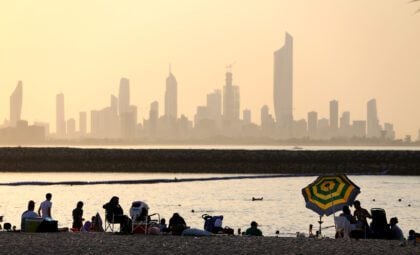


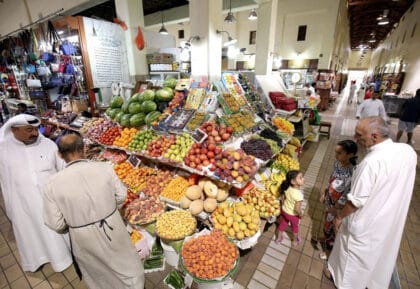
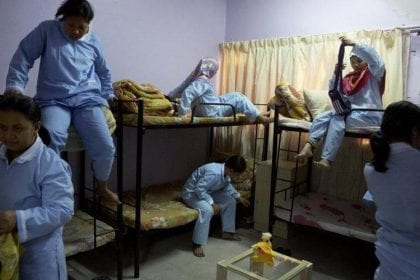





Social Inequality
According to social anthropologist Anh Nga Longva, one of the most astute observers of contemporary Kuwaiti society, Kuwaiti society as a whole has been raised to a higher material level with the coming of oil. The age-old class differences have not been erased in the process, because a new underclass, consisting of migrant workers, has simply been added beneath the whole existing structure of pre-oil Kuwaiti society.
With the coming of independence, the subordinate position of the latter group was formalized by nationality laws. A practically impassable boundary has thus been created between ‘citizens’ – those lucky inhabitants who acquired full citizen rights, including all material and immaterial benefits of the new welfare state – and the less fortunate ‘non-citizens’, who were left with limited civil rights and economic opportunities.
Because the nation’s citizens have always viewed the majority of non-citizens as a cultural and political threat, their presence has served to soften and partly cover up the social, ethnic, and sectarian divisions within the citizen group itself. The presence of a large group of ‘foreign’ inhabitants without full rights of citizenship has thus helped keep pre-oil social structures and divisions in place.
Again according to Longva, it may even have hindered the emancipation of local women, for the perceived threat from large numbers of foreigners with ‘loose morals’ has rationalized the old patriarchal notion that decent local women are in constant need of protection – and thus oversight – by their male relatives.
Likewise, because most citizens seem to agree that the nation’s demographic balance should be tipped in their favour in the near future, the image of Kuwaiti women as valuable but passive biological reproducers has been reinforced, to the detriment of a more modern view of women as valuable and active economic assets.